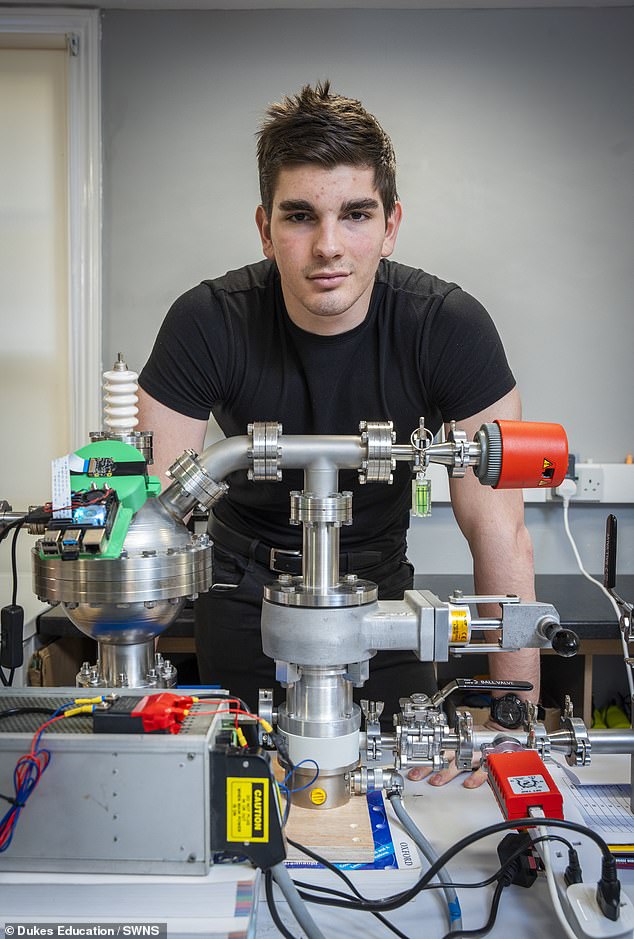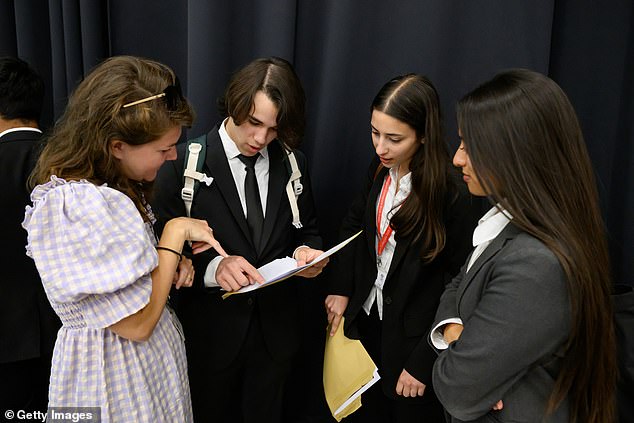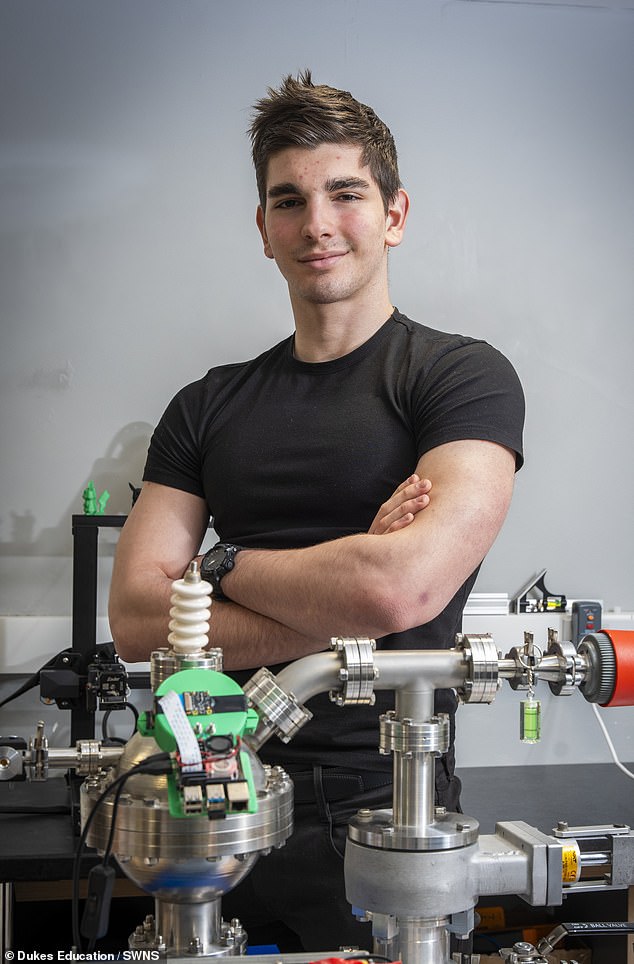A clever teenager successfully built his own nuclear fusion reactor at university and received an A* grade.
Cesare Mencarini, 17, built the reactor to generate neutrons as part of his Extended Project Qualification (EPQ), for which he received an A* in his A-Level results today.
Before embarking on his ambitious project, Cesare had to convince his teachers that it was not dangerous and then spent another 18 months making his vision a reality.
It is believed to be the only nuclear reactor built in a school setting and recently showcased its work at the Cambridge Science Festival.
He also achieved top grades in mathematics, further mathematics, chemistry and physics while studying at Cardiff Sixth Form College in Wales.
Cesare Mencarini, 17, built the reactor to generate neutrons as part of his Extended Project Qualification

Before embarking on his ambitious project, Cesare had to convince his teachers that it was not dangerous.
Cesare plans to work at the University of Bristol’s Centre for Interface and Analysis in Gloucestershire for a year before applying for an engineering degree.
He hopes to “encourage other young people to develop ideas” and think about how “they can improve our world.”
Today’s nuclear power plants use nuclear fission, which involves splitting atoms into smaller parts to create energy.
But nuclear fusion has been hailed as a planet-saving energy source because it involves fusing atoms together, creating a huge amount of energy.
The main problem preventing the use of fusion is the astronomical temperatures required before atoms begin to join together.
Cesare, who is from Italy, said: ‘At first the school was worried that this project, which I also used for my EPQ, was dangerous.
‘However, we did full risk assessments and the staff were very supportive.
‘I had to adapt the design to fit the budget and my aim is to encourage other young people to develop ideas and think about how we can improve our world and be innovative.
‘The purpose of the reactor is to produce the conditions necessary for fusion to occur.

Hundreds of thousands of students in England, Wales and Northern Ireland received their exam results today (pictured: City of London Academy students)

Education Secretary Bridget Phillipson visits Loreto Sixth Form College on results day as students receive their grades

Kherri French (left) and Yasmin Hanachova (right) react together as they receive their A-level results this morning at Norlington School and Sixth Form in Waltham Forest, East London.
“However, since we cannot achieve the same pressure here as the Sun’s own gravity can achieve, we have to use a high voltage to heat the atoms sufficiently.”
College principal Dr Julian Davies described Cesare as “outstanding” and said he would have a “significant impact on the energy industry in the future”.
He said: ‘This is an extremely exciting project and has taken a year and a half to develop.
‘We want to give our students the opportunity to work on projects that interest them as well as teach them to pass exams and be brave by allowing them to take risks and develop projects applicable to real-life situations.
‘Cesare has been outstanding in his work ethic and will undoubtedly have a significant impact on the energy industry in the future.’
Hundreds of thousands of students in England, Wales and Northern Ireland received their exam results today in a year when grades were expected to return to 2019 levels across all three nations.

Carys Bonell and Ava Doherty celebrate today at Harris Westminster Sixth Form in London

Hannah Greenwood reacts with her parents as she receives her results at Solihull school today

Noah Harrison receives his A-level results at Solihull School in the West Midlands this morning

Students celebrate their results today at King Edward VII Girls’ Grammar School in Birmingham

Students receive their A-Level results today at the City of London Academy Highgate Hill
More than a quarter (27.8 per cent) of UK entrants achieved an A or A* grade, an increase of 0.6 percentage points on last year, when 27.2 per cent achieved the highest grades.
This figure was also higher than in 2019 (the last year summer exams were held before the pandemic), when 25.4 per cent of entrants achieved A or A* grades.
But the overall pass rate – the proportion of entrants graded between A* and E – has fallen to 97.2 per cent this year, which is down from last year (97.3 per cent) and the year before the pandemic, 2019 (97.6 per cent).
The figures, published by the Joint Council for Qualifications (JCQ), cover A-level enrolments for students in England, Wales and Northern Ireland.
In England, exam regulator Ofqual had said it expected this year’s A-level results to be “broadly similar” to last year’s, when grades were restored to pre-pandemic levels.
In Wales and Northern Ireland, exam regulators said they aimed to return to pre-pandemic qualifications this summer, a year later than in England.
This comes after the Covid-19 pandemic led to a surge in top grades in 2020 and 2021, with results based on teacher assessments rather than exams.
Figures from Ucas show that the number of applicants accepted onto degree courses in the UK has increased this year.
In total, 243,650 UK 18-year-old applicants were accepted into a university or college, compared with 230,600 last year, an increase of 6 per cent.


